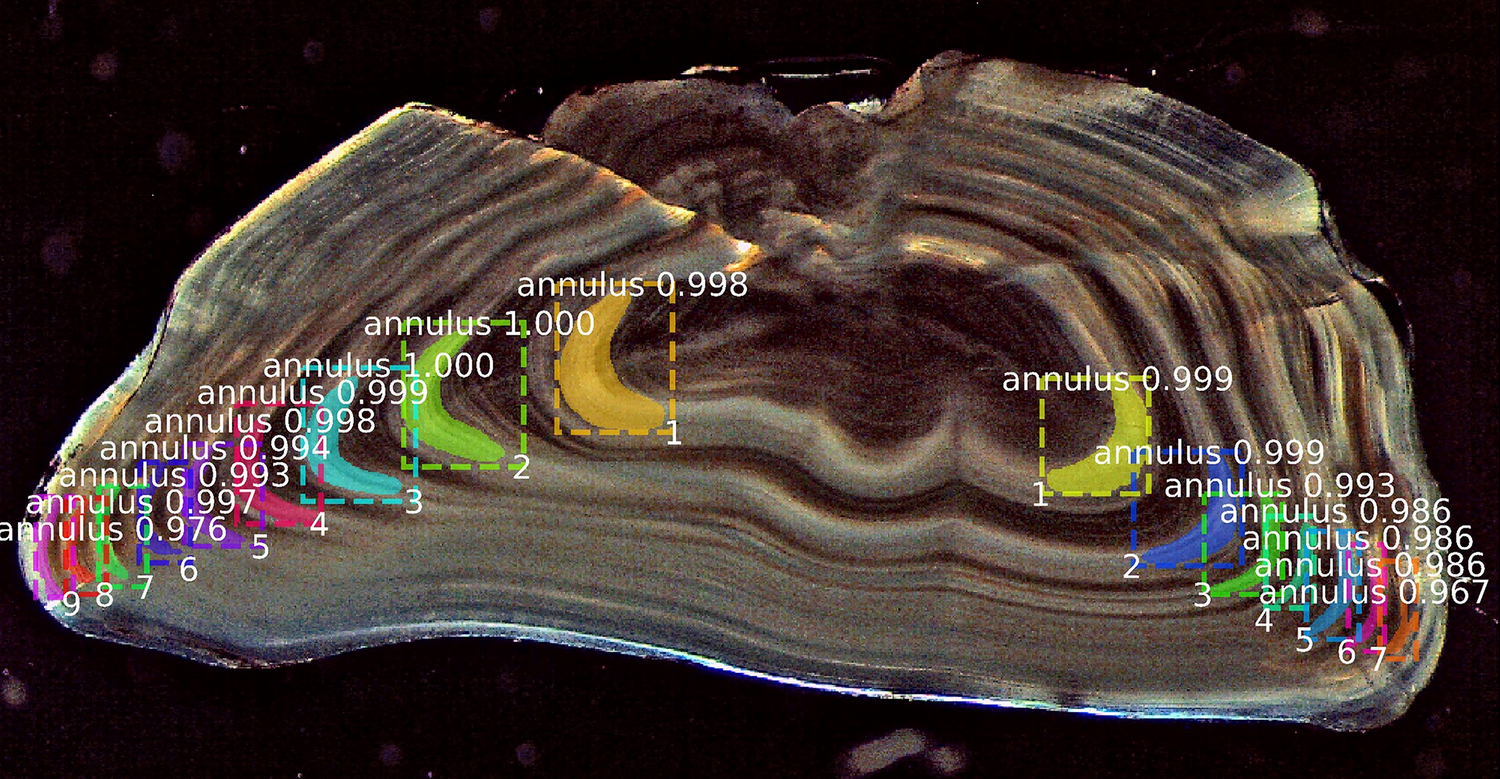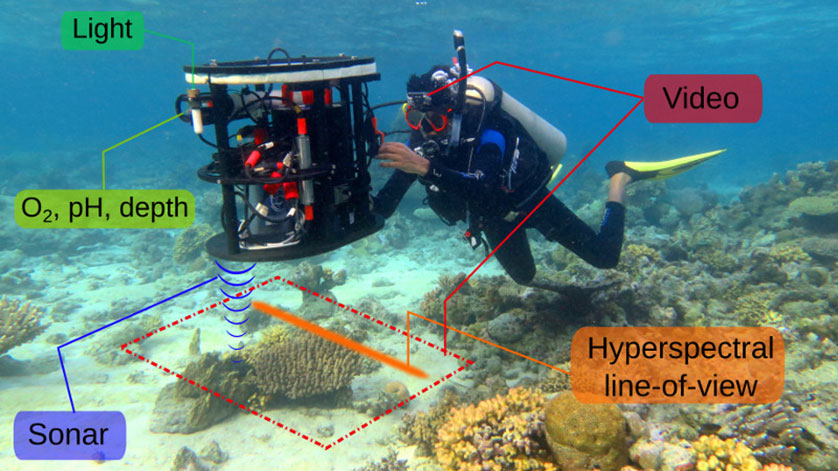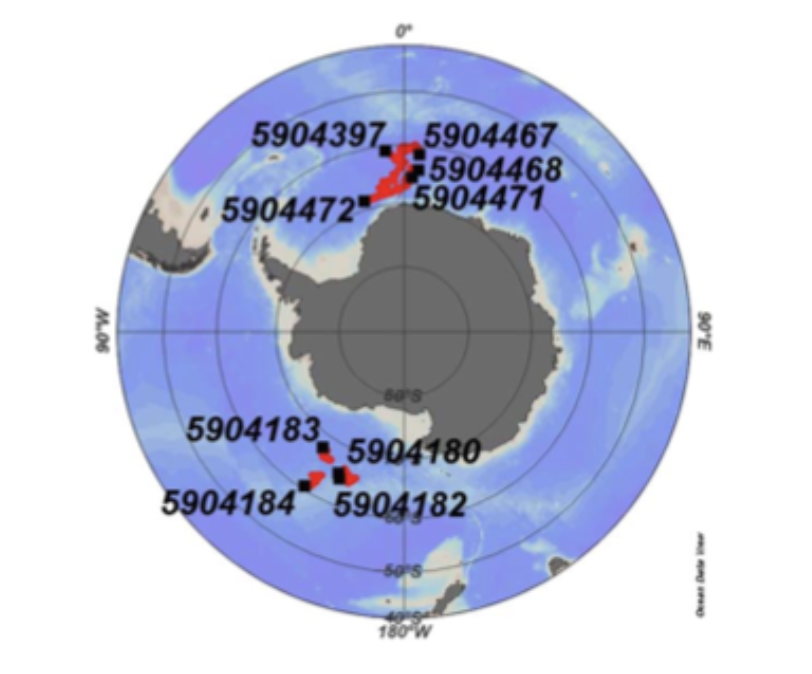Arjay Cayetano, Christoph Stransky, Andreas Birk, Thomas Brey, Fish age reading using deep learning methods for object-detection and segmentation, ICES Journal of Marine Science, Volume 81, Issue 4, May 2024, Pages 687–700, https://doi.org/10.1093/icesjms/fsae020
Counting Rings
How can you tell the age of a fish? It’s actually very similar to finding the age of a tree. Much like the rings of a stump, fish will create ring-like patterns on scales or otoliths (ear bone/stone) each year as they grow. If you count these rings, it gives an idea how many years the fish has been alive.
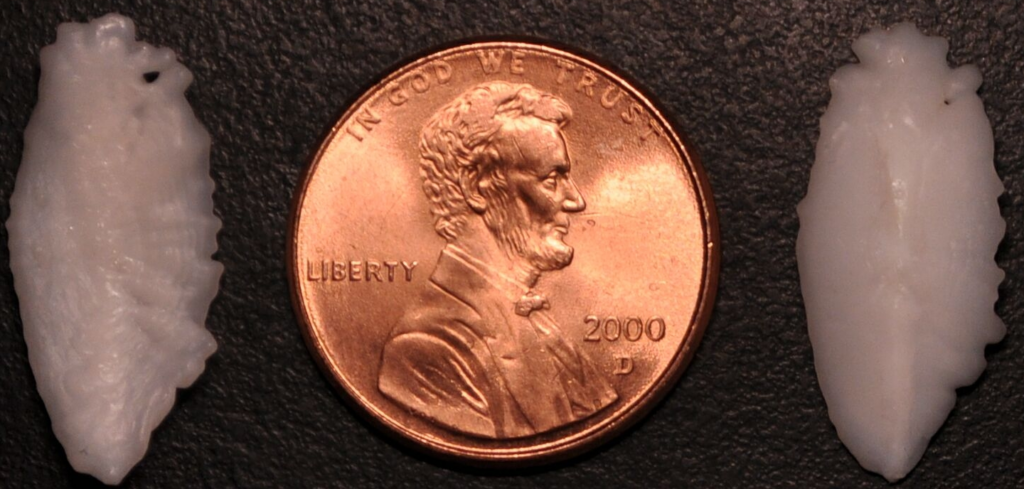
Age is important for understanding the health of fish stocks to inform catch limits. However, these rings can be difficult to count from year to year. If not done correctly, this can create incorrect data that can bias conservation policy.
In the last 5 years, machine learning techniques have attempted to automate the process to remove bias and human error. However, this algorithm is not flexible enough to apply its knowledge to samples not introduced during its training. It is also difficult to understand how the program reaches its outputs, making critical review of its work impossible.
Cayetano et al. (2024) proposed a new machine learning technique that uses object identification to count the rings. In other words, how humans count rings. This will make it possible to compare to manual counting to ensure accuracy.
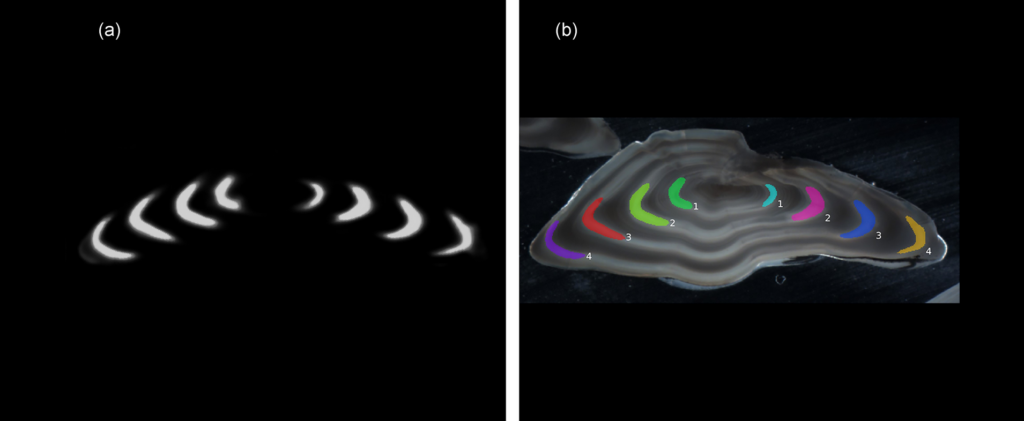
Old vs New
The old machine learning technique, named CNN regression, was accurate in its counting throughout the study. However, when variables such as poor-quality images and otoliths it wasn’t trained on were introduced, its reliability dropped. On the other hand, the new machine learning technique, Mask R-CNN, maintained accurate counting even with the variables introduced. It was even able to take new species’ otoliths it had not been trained on and produce accurate readings, demonstrating its ability to be versatile.
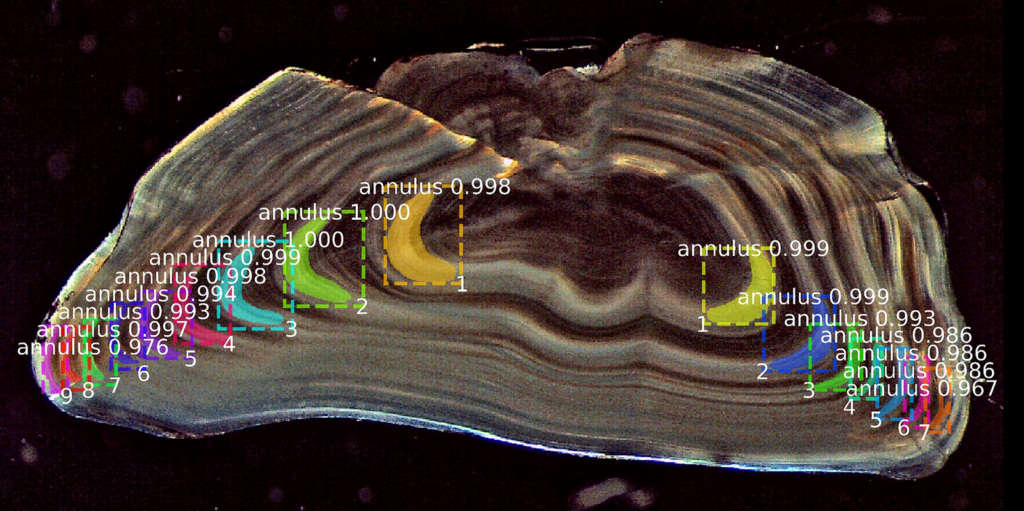
This is important because one major drawback to machine learning is the time it takes to train the algorithm to correctly identify rings. In CNN regression, if you were to look at two different species of fish, you would have to train the program with two separate sets of otoliths. This is because of the different sizes and structures that can vary between species. The same can be true for manual counting. Scientists must go through rigorous training to be considered before they can count, even if they are already an expert with one species.
Mask R-CNN, may be able to reduce this training time by using its prior knowledge to make an educated guess when looking at a new species. However, more rigorous testing will need to be done in order to confirm this since scientists can also guess without following established protocol.
Automatic Counting in the Near Future?
Machine learning continues to prove itself as a new avenue to help automate tedious processes like aging fish. This comes at a time when data sets and population studies of fish stocks are examining thousands of individuals at a time. The sheer number is nearly impossible to keep up with for the few otolith experts available. Mask R-CNN offers a solution to quickly automate the process with the possibility of reducing training time on new species in the future.
I am a recent MSc graduate in marine biology from Bangor University, where I studied population dynamics of elasmobranchs off the coast of Wales. My interests lie in ecological data analysis to understand environmental processes and identify natural patterns. However, nothing beats being in the field and interacting directly with the marine life.

